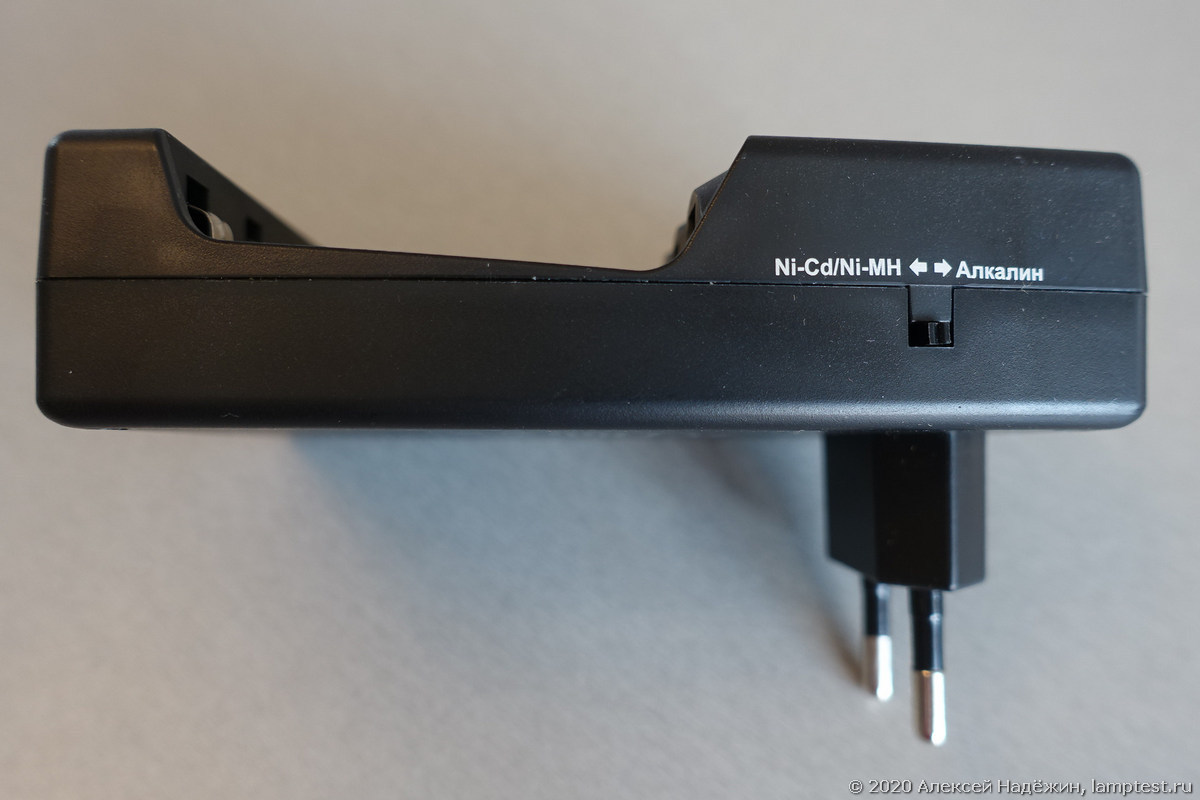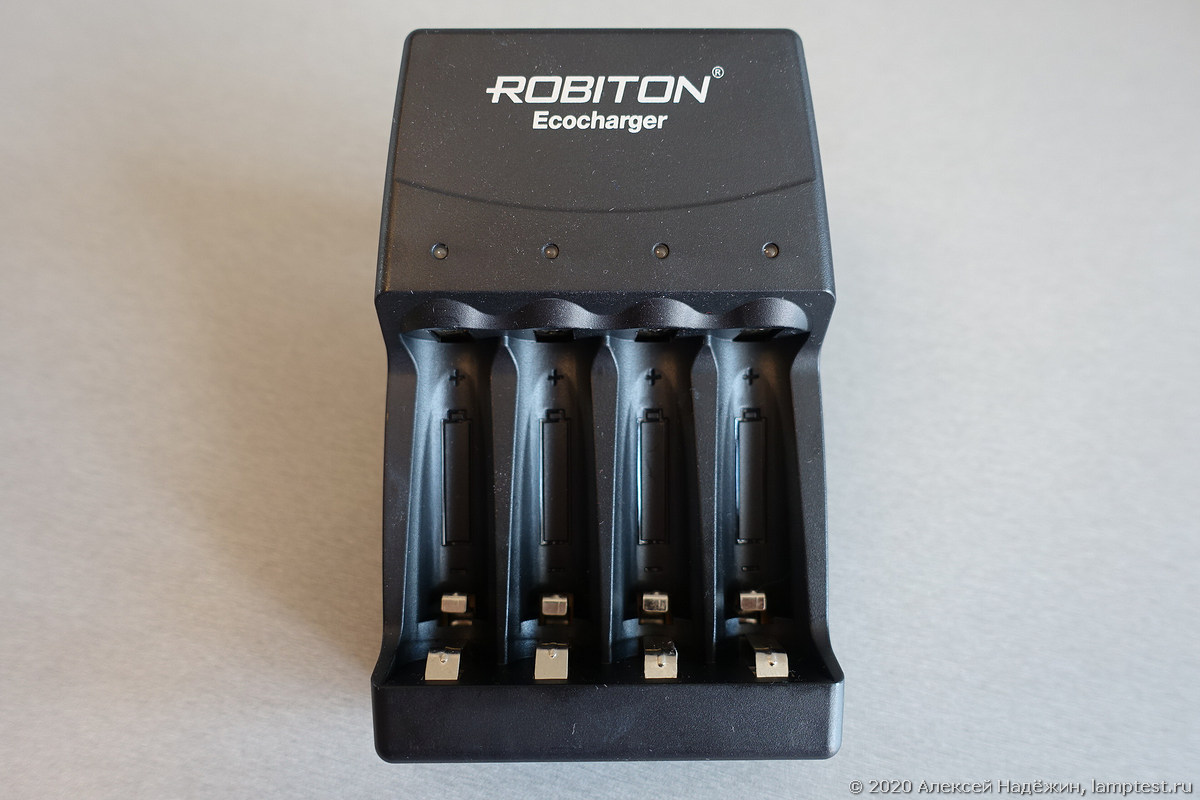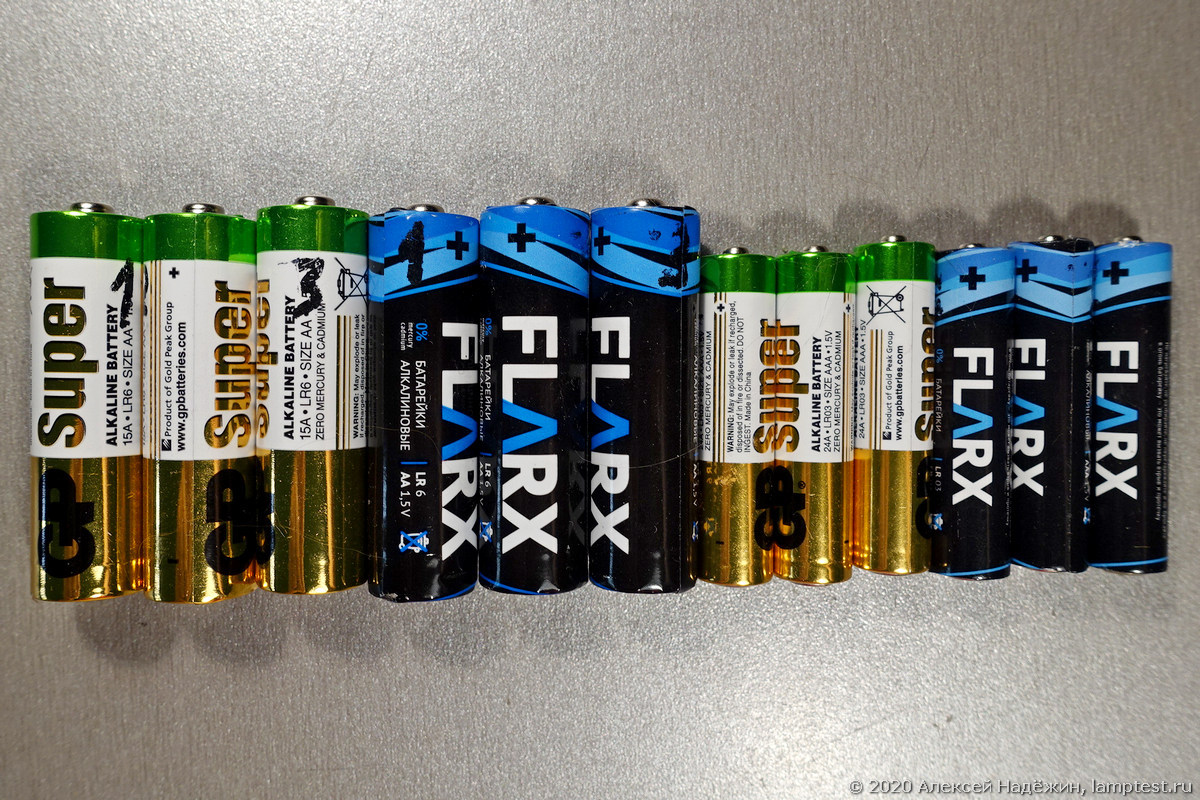
I only know of two models of battery chargers. The first device is sold on Aliexpress, costs about 600 rudders, charges only batteries and is powered by USB.
The second device - ROBITON Ecocharger AK02 costs about 900 rubles, charges both batteries and accumulators, is powered from the mains.

The charge mode is switched on the side of the device.

The device charges accumulators with a current of 350 mA, batteries are charged with a current of 100-150 mA.

You can charge AA and AAA batteries and rechargeable batteries, the device has four independent channels. Dual-color LEDs indicate the status of each channel, so it's also good battery charging.

For the experiment, I took new AA and AAA batteries of two brands - the deliberately good GP Super and one of the cheapest FLARX from FixPrice stores. There are three of each type, 12 pieces in total.

At first, all the batteries were discharged in three modes with measuring the capacity:
- Discharge in the "constant resistance" mode with an initial current of 200 mA;
- Discharge in the "constant resistance" mode with an initial current of 1000 mA;
- Discharge by impulses (10 sec load, 20 sec pause) in "constant resistance" mode with an initial current of 2500 mA for AA and 1000 mA for AAA.
All batteries were discharged to 0.9 V. I got the following results for the capacity of new batteries.

Discharge graphs.

Then I gave the batteries a “rest” for 12 hours, charged them, “gave them a rest” again and discharged them in the same modes. And so five times (the whole process took almost a month). I will not clutter up the article with a huge number of figures and graphs, I will only show how the given energy fell as a percentage of the initial one.
Batteries that have been discharged by high current pulses are best charged: after the first charge, they give 60-75% of the energy when discharged in the same mode, and even after the fifth charge, they are able to give 39-43% of the initial energy. This and the following tables show the percentage of initial energy in watt-hours after 1, 2, 3, 4 and 5 charges.

Batteries are well charged even after continuous discharge with high current: 50-60% after the first charge, 24-32% after the fifth.

But after a discharge with a small current, everything is much worse. The FLARX AAA battery could not charge at all even once, the GP AAA was charged once and gave 36% of the initial energy, but could not charge any more. AA batteries gave 35-39% of the initial energy after the first charge, and then the FLARX AA continued to charge and give 33-35% energy each time, and the GP AA was almost unable to charge.

But energy is not everything. After charging, the batteries initially have a lower voltage and some devices will consider freshly charged batteries to be half-discharged. I measured the voltage a minute after the start of the discharge.
New batteries, discharged with a low current, initially have a voltage higher than 1.5V, but after the first charge their initial voltage turned out to be about 1.2V and many devices will rightly consider charged batteries "semi-dead".
This and the following tables show the voltage values in volts for a new battery (0) and after 1-5 charges, measured one minute after the start of the discharge with the indicated current.

With a continuous discharge of new batteries with a high current, in a minute the voltage on AA batteries is about 1.4V, and on AAA batteries 1.3V. For charged batteries, this voltage is 0.2V less.

A similar picture is observed for batteries discharged by high current pulses.

The experiment revealed the following:
- alkaline batteries can really be charged, and more than once;
- after charging, most batteries give from one third to two thirds of the initial capacity;
- batteries that have been discharged with high currents are best charged;
- the better the battery is initially, the worse it charges, since during the first use it gave up maximum energy;
- the charging process takes from 3 to 12 hours, depending on the state of the battery;
- the more energy was initially supplied by the battery, the worse it charges;
- for a successful charge, it is necessary that the voltage on a discharged battery is above 1 volt;
- during the experiment, not a single battery leaked.
Should you charge the batteries? And why not, but it hardly makes sense to charge them more than once. It seems to me best to use new batteries in devices with high power consumption, and when they "run out", charge them and install them in a device with low consumption, such as a watch or remote control.
© 2020, Alexey Nadezhin